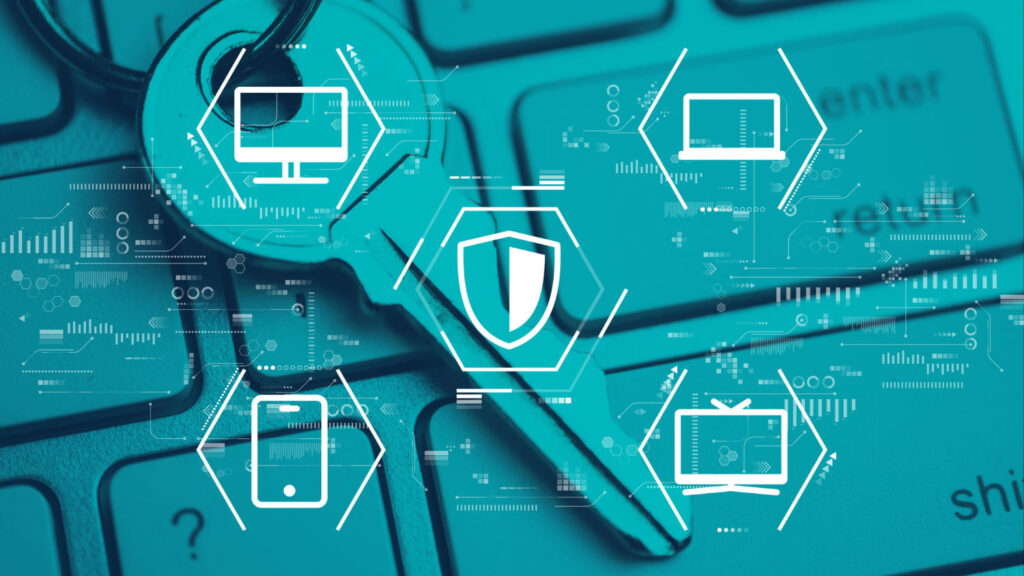Data encryption is the process of transforming data into a secret code that can only be accessed and understood by authorized parties. Whether sending emails, browsing the web, or storing files in the cloud, this technology helps us keep our data safe from malicious actors.
Ahead, we will explore the basics of encryption, how it works, and why it matters. We will also look at some of the challenges and opportunities that encryption presents for the future of the internet.
What is Encryption?

People commonly ask, “What is encryption?” The answer is simply this: encryption is a way of protecting data from unauthorized access by scrambling it into a secret code. Only those who have the right key can decode and read the data. It is based on mathematical algorithms that make breaking the code hard without the key.
This technology is used for many purposes, such as keeping our online communications, transactions, and files private and secure. Also, it helps us defend our digital rights and freedoms from hackers, governments, and corporations that might want to spy on or censor us.
How Encryption Works

Besides the question of “What is encryption?” you might also be curious about how this technology works and its implications for digital forensic investigations.
Encryption is the process of converting readable data, or “plaintext,” into an unreadable format, called “ciphertext,” using cryptographic algorithms. These algorithms generate encryption and decryption keys—sequences of numbers or passwords—that transform the data.
The correct decryption key is needed for the data to be understood again. This key could be the same as the encryption key in symmetric encryption or a different but related key in asymmetric encryption, mirroring the way physical keys work to unlock something.
Secure encryption techniques employ a vast number of possible keys to prevent unauthorized access through guessing or a brute force attack, where every possible key combination is tested until the right one is found.
Why is Encryption Important?

Now, you have the answers to “What is encryption?” and “How does encryption work?” but why is it so important?
Encryption is essential for various reasons, such as:
Security
Encryption protects data from breaches by making it unreadable to anyone who does not have the correct key. It can also prevent data tampering or manipulation by ensuring that any changes to the data are detected and rejected. This enhances the security of data stored on devices, transmitted over networks, or shared with others.
Regulations
Encryption can help organizations comply with legal or industry regulations that require sensitive or personal data protection. For example, encryption can help meet the GDPR, HIPAA, or PCI DSS standards. This way, organizations can avoid fines, penalties, or lawsuits for data breaches or violations.
Privacy
Encryption can help individuals protect their privacy and confidentiality by preventing unwanted or intrusive access to their data. It can also help individuals exercise their rights to data ownership, consent, and erasure.
Data Integrity
Encryption can help ensure that data is accurate and consistent by preventing or detecting any unauthorized modifications or corruptions, such as a man in the middle attack. It can also help preserve the authenticity and validity of data by proving its source and identity.
What are the Types of Encryption?

There are two main encryption types: symmetric and asymmetric. Let’s dig into each type!
Symmetric Encryption
Symmetric encryption is a method of securing data using the very same key to both encrypt and decrypt it. This means that both the sender and the receiver of the data need to have the same secret key, which they must share securely beforehand. AES, or Advanced Encryption Standard, uses this type.
Though fast and efficient, this type has some drawbacks. For instance, if the key is compromised, an attacker can easily decrypt the data. Also, it requires a lot of keys to communicate with different parties, which can be hard to manage and distribute.
Asymmetric Encryption
Asymmetric encryption, or public-key encryption, is a method of securing data by using two different keys: a public key and a private key. While the owner can keep the private key secret, they can share the public key with anyone.
The public key can encrypt data, but only the private key can decrypt it. Similarly, the private key can sign data, but only the public key can verify it.
While this type is more secure and flexible than symmetric encryption, it is also slower and more complex. One famous example of asymmetric encryption is end-to-end encryption, which is commonly used in messaging services.
Common Encryption Algorithms

These are the most commonly used encryption algorithms, both symmetric encryption and asymmetric encryption:
AES Encryption
AES encryption, or Advanced Encryption Standard, is a symmetric block cipher developed by NIST to secure data from cyber threats. It uses multiple rounds of encryption, including substitution, transposition, and mixing, making it highly secure. It’s widely used to protect sensitive information in government, online transactions, and other applications.
RSA
RSA is a historic public-key cryptosystem where users share a public key derived from prime numbers. Messages can be encrypted with this key, but only those with the private key can decrypt the data. While RSA is slow, it’s commonly used to facilitate symmetric-key cryptography by transmitting shared keys.
PGP Encryption
PGP encryption, or Pretty Good Privacy, encrypts and decrypts sensitive online data using public and private keys. Created by Paul Zimmerman in 1991, it’s commonly used for email encryption to ensure confidential data transmission.
DES Encryption
DES, or Data Encryption Standard, is a symmetric-key algorithm using a 56-bit key to encrypt 64-bit blocks of data. Developed in the early 1970s and standardized in 1977, it was widely adopted initially but is now considered insecure due to its short key length, making it vulnerable to brute-force attacks.
Nowadays, AES has largely replaced DES for modern applications due to its superior security.
Homomorphic Encryption
Homomorphic encryption (HE) enables authorized users to perform mathematical operations on data without decryption. This minimizes security risks associated with accessing private data, enhancing overall data security and privacy.
Advantages of Encryption

Encryption brings several advantages, such as:
Protects Digital Transformations
With the use of cloud storage, encryption helps safeguard individual or organization data that is in transit, at rest, or in the process.
Protects Data Across Devices
Encryption is used to protect data across various devices. This ensures security even if devices are lost or compromised during transfers between devices or storage platforms.
Ensures Data Integrity
Since your data can only be seen by authorized parties, it helps prevent data change, fraud, or extortion and enhances data integrity.
Disadvantages of Encryption

Despite its benefits, there are several drawbacks to this technology, including:
Key Management
Encryption intricacies to maintain security will be ineffective if the cryptographic keys are insecure or lost. As a result, robust key management must be used to ensure key safety management.
Quantum Computing
The current encryption technology is facing a quantum computing threat that has the potential to break it. However, since there is still limited quantum computing technology utilized, users can think positively that it won’t break the current encryption standards.
Ransomware
In the case of a data breach, malicious actors can gain your data, encrypt it, and hold it hostage to the data using ransomware. The actual user won’t regain the data until they pay some ransom to the hacker.
Frequently Asked Questions
What is the main difference between cryptography and encryption?
Cryptography is the science of designing and applying methods to protect sensitive data from modification or unauthorized access. Encryption is one of the methods used in cryptography to transform data into an unreadable form using a secret key. Encryption is a specific technique, while cryptography is a broader field.
Is encryption a network security?
Encryption is not exactly network security, but it is a part of network security. There are other network security measures, such as firewalls, antivirus, authentication, and access control.
Why is encryption banned?
Several countries ban encryption because it could be misused for illegal activities, such as drug dealing and terrorism.
Conclusion
In conclusion, encryption plays a vital role as a shield in our digital world, protecting data across devices, ensuring privacy, and preserving integrity. With the rapid evolution of technology and the constant possibilities of cyber threats, encryption remains an essential tool for individuals and organizations alike.
While challenges such as key management and emerging quantum computing threats persist, encryption’s benefits far outweigh its drawbacks.
So, now you have understood the answer to the “What is encryption?” question.
If you want to navigate a robust, modern encryption method for your business, contact Fluxgate now!
